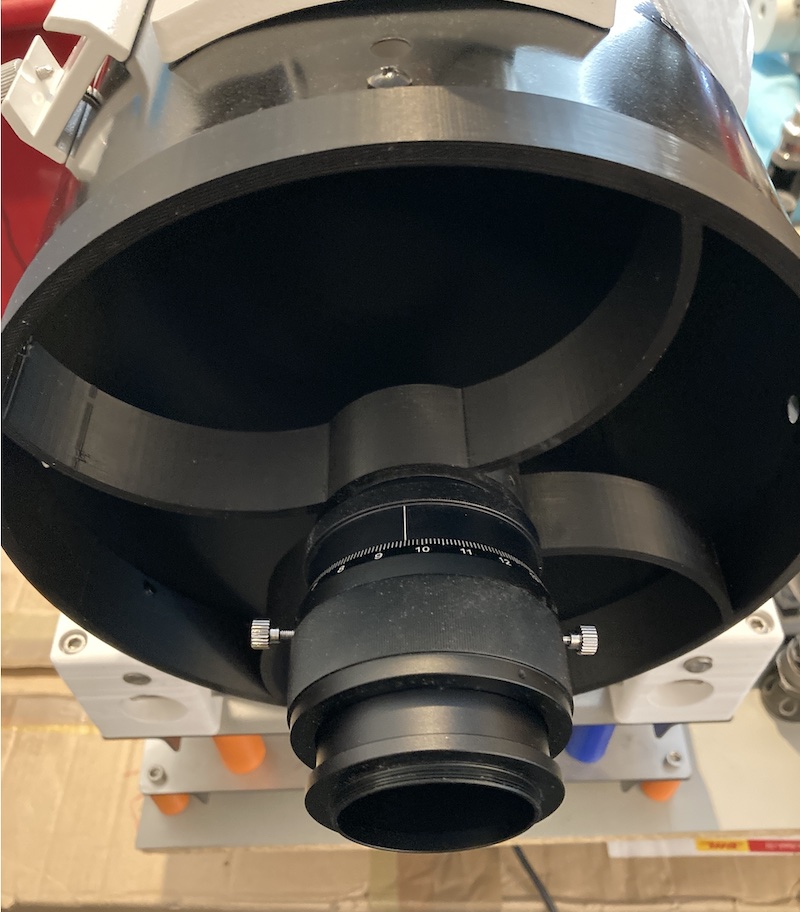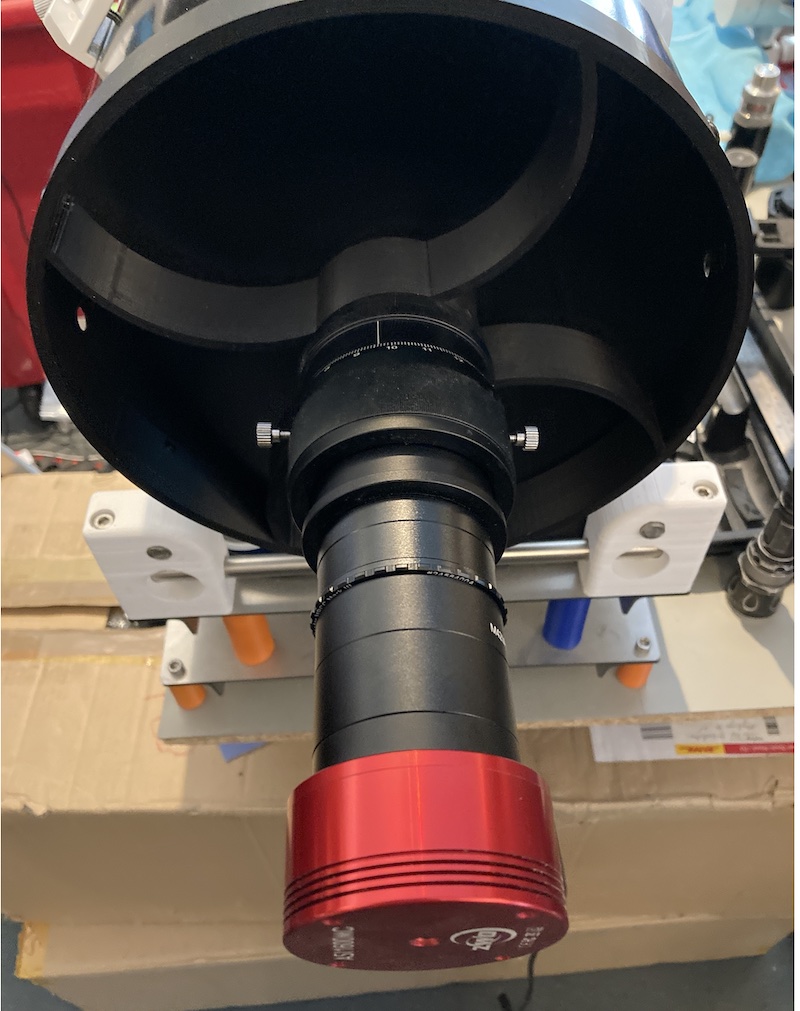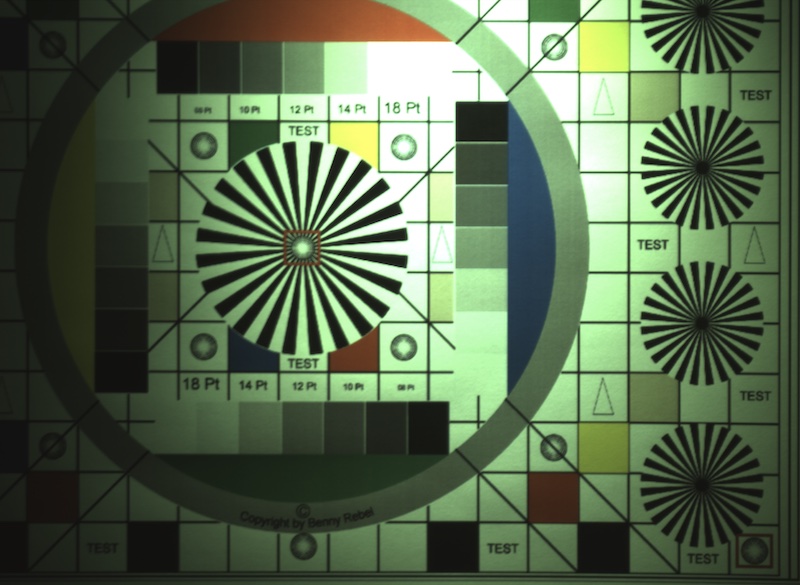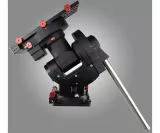- Details
Produktbeschreibung
Prototyp eines Newton-Astrographen
Wir bekommen manchmal Teleskope vom Werk geliefert, die total verbogene Fangspiegelspinnen haben, die wir nicht reparieren können. Mit der Zeit haben sich daher ein paar Exemplare angesammelt, die zu schade zum entsorgen sind.
Daher haben wir uns eines Abend zusammengesetzt und usn überlegt, was wir damit konstruieren können. Plötzlich kam die Idee eines Astrographen auf.
Die ersten Tests mittels Kamera auf einem Fotostativ vor dem Newton sahen sehr vielversprechend aus, so dass wir uns entschlossen haben einen Prototypen zu bauen. Zielsetzung war eine einfache Umsetzung.

Hier sind die ersten Komponenten abgebildet: statt der Fangspiegelhalterung eine neue 2 Zoll Halterung für den Okulartrieb. Wir haben hier den TS Heli 2 gewählt, da er ein M48-Gewinde okularseitig hat und sich bei der Fokussierung nicht mitdreht.
Für die Komakorrektur haben wir den MPCC Mark III von Baader gewählt.
Von dem MPCC aus gehen haben wir einen Backfocus von 55 mm, der wird mittels M42m-M48f Adapter 16.5 mm und einem M42m-M42f 21 mm ausgeglichen. Für die Tests nutzen wir eine ZWO ASI1600 MC mit 17.5 mm Backfocus.

Die Bilder sind bis in die Ecken der ASI1600MC scharf, es ist keine Koma zu sehen.
Da die Form der Spinnen so speziell designed wurde, sind keine typischen Spikes zu sehen, jedoch sind die Sterne etwas aufgeblähter.
Die Test müssen noch am echten Sternhimmel validiert werden, bisher konnte wir die Tests nur mittels künstlichem Stern durchführen.

(Sorry wegen der komischen Ausleuchtung, es liegt an der Beleuchtung der Tafel, nicht an der Kamera.)
Jetzt geht es darum, das Ganze in Serie zu bringen... Fortsetzung folgt...
Diesen Artikel haben wir am 12.01.2022 in unseren Katalog aufgenommen.
Profitieren Sie von unseren Erfahrungen als Teleskop-Spezialisten:
denn sehen heißt verstehen
in besonderen Fällen auch Vor-Ort-Service im Raum München


